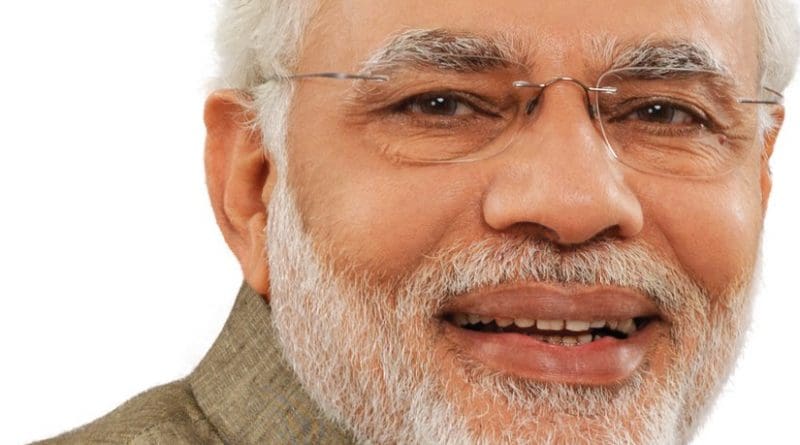Modi In Iran: A Successful Visit – OpEd
By IPCS
By Ambassador KP Fabian*
Indian Prime Minister Narendra Modi’s two-day visit to Iran from 22-23 May 2016 is easily one of the best visits in terms of impact, made by this globe-trotting head of government who went to 26 countries in 2015. This visit has to be viewed in context. Iran is a superpower in energy with 10 and 18 per cent of global oil and gas reserves respectively. Treated as a pariah state by Washington since the 1979 US embassy hostage crisis and later put under more sanctions by others too for the absurd charge of enriching uranium, Iran demonstrated singular skill in playing diplomatic chess by concluding the nuclear agreement in July 2015, leading to the lifting of most of the sanctions by January 2016. China’s President Xi Jinping was the first to reach Tehran after the lifting of sanctions.
Any criticism of Modi for not rushing earlier to Iran is misplaced. He correctly chose the sequencing, Saudi Arabia, UAE, Iran, and soon, Qatar. If Modi had gone to Iran first and then to Saudi Arabia, he would have risked a cold reception in Riyadh, of which US President Barack Obama got a taste with the Saudi media not highlighting his visit.
Modi’s meeting with Iran’s Supreme Leader Ayatollah Ali Khamenei is significant as such a meeting is rarely accorded to a visiting chief of government or state. The Ayatollah had come to India in the early 1980s when he was deputy minister of defence. Twelve agreements on matters ranging from Iran’s Chabahar Port to foreign office-level consultations were signed. The most important themes covered by the agreements are connectivity, trade, and investment. Pakistan permits Afghanistan to send goods to India via the Wagah border but it does not permit Afghanistan to import from India via the same route. Chabahar Port will give India access to Afghanistan and Central Asia. The word ‘Chabahar’ means four springs in Persian, meaning that it is always spring there. There is a road from Chabahar in Iran to Zaranj in Afghanistan, and from there to Delaram (built by India in 2009) which is on the Garden Highway linking the four major Afghan provinces of Herat, Balkh, Ghazni, Kabul, Farah and Kandahar. India will be constructing a railway line in Iran connecting Chabahar to Zahedan.
The immediate takeaway is that apart from India’s gain in improved access to Afghanistan, Iran, and Central Asia, both Afghanistan and Iran stand to gain considerably. A glance at the map will show that Oman and UAE too will gain.
After connectivity comes energy. Some of India’s refineries are designed to take in the crude from Iran, which was a major supplier till the US began ‘dissuading’ importers of crude from Iran. Apart from buying crude and gas, India wants to invest in production. Iran’s Farzad B is a gas field under discussion and the agreement could not be finalised this time. There was a credit of USD 6.5 billion payable to Iran for crude already imported; but the US’ control over the international banking system, amounting to unipolarity, made it difficult for India to pay the sum. However, a part payment of USD 750 million was made before Modi landed in Tehran.
India will invest in the Chabahar Free Trade Zone. It is advantageous for India to produce aluminium and fertiliser given the low priced gas available there.
An agreement to deepen cultural cooperation too was signed. Modi presented a Persian version of Panchatantra and the Jataka tales and quoted Ghalib, “Once we make up our mind, the distance between Kaashi and Kaashan is only half a step.” Kashi, India is an Indian pilgrimage site and Kaashan, Iran, is famous for carpets. What was missing was an announcement about establishing an Indian cultural centre in Tehran. An Iranian cultural centre has been functional in New Delhi for years.
How will Pakistan respond to this coming together of Iran, India, and Afghanistan? Incidentally, the Dawn carried a photo of Iranian President Hassan Rouhani, Indian Prime Minister Narendra Modi, and Afghan President Ashraf Ghani sitting together. One did not find it in some of the mainstream Indian dailies. Pakistan might ask China to move faster with the USD 46 billion worth 2442 kilometre-long China Pakistan Economic Corridor to Gwadar, Balochistan. Still, Pakistan will have to recognise that its policy of not normalising relations with India and arranging for terrorist attacks against Indian targets in Afghanistan from time to time might not pay the expected dividends.
It will be useful to recall that former Iranian President Mohammad Khatami came to Delhi in 2003 as the chief guest for the Republic Day celebrations and signed the Delhi Declaration. Iran was already in the “axis of evil” in the eyes of the then US President George Bush. The Delhi Declaration issued during the visit spoke of a strategic partnership and added that the two sides “will explore opportunities for cooperation in defence in agreed areas.” The Wilson Centre, a US-based think tank, got rather worked up and said, “According to some press accounts, New Delhi will have the right to use Iranian military bases for combat operations against Pakistan should another Indo-Pakistani war break out.” The point to note is that Iran is prepared to get closer to India.
Modi’s worst foreign visit was the hurried and unprepared one to Lahore in December 2015. In contrast, the one to Tehran was well prepared, diligently designed and smartly executed.
The challenge before India can be summed up in two words: timely delivery. There is scope for improvement.
* Ambassador KP Fabian
Former Indian diplomat, & Professor, Indian Society of International Law

